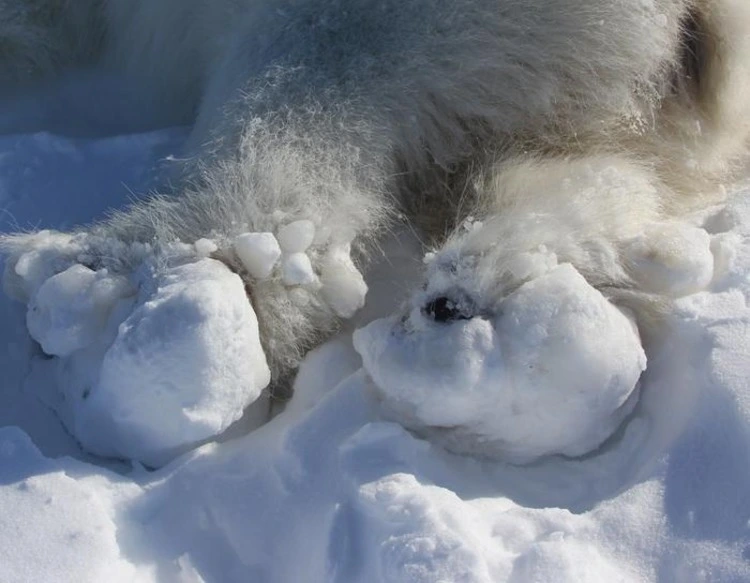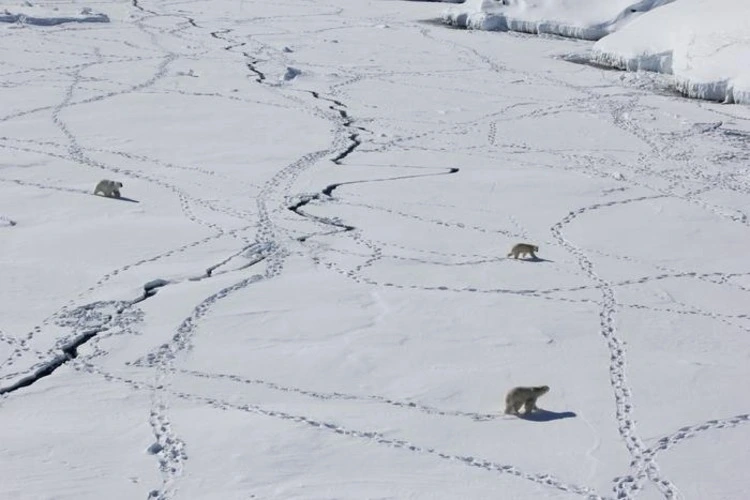
Change in sea ice conditions causes injuries to polar bears, with painful ice blocks up to 30cm in diameter adhering to their feet
By
Adult polar bears in parts of the high Arctic are sustaining injuries to their feet – ranging from deep lacerations, skin ulcerations and hair loss – due to more frequent freeze-thaw cycles from climate change, a new study led by University of Washington has found.
In the first documented report of such injuries, researchers studied two populations of polar bears – one in the Kane Basin between Canada and Greenland, and another in East Greenland – between 2021 and 2022.
Related reads:
In the Kane Basin, more than half of polar bears showed evidence of icing-related injuries, while 15 out of 124 polar bears in the East Greenland population suffered injuries too.
Two bears had huge ‘ice balls’ – measuring up to 30cm (1ft) in diameter – stuck to their foot pads, making it difficult for them to walk.
‘I’d never seen that before,’ said lead author of the study and senior principal scientist at University of Washington Physics Laboratory Kristin Laidre. ‘The two most affected bears couldn’t run — they couldn’t even walk very easily.’

‘When immobilizing them for research, we very carefully removed the ice balls. The chunks of ice weren’t just caught up in the hair. They were sealed to the skin, and when you palpated the feet it was apparent that the bears were in pain.’
Polar bears use wide bumps on their paws for traction on icy surfaces, but this adaptation makes it easier for ice to stick onto their feet and accumulate. However, consultations with Indigenous hunters, as well as surveying existing scientific literature, has led scientists to believe this is a recent phenomenon.
Three theories exist for its occurrence: firstly, more rain-on-snow events creating slushy snow which easily clumps onto paws and then freeze as temperatures plummet.
A second theory suggests more warm spells cause surface snow to melt and refreeze into a hard crust. This crust could cause polar bears to experience the deep lacerations seen in both populations.
Finally, the third reason points to both populations living on ‘fast ice’ – ice fastened to coastlines or shores. When these areas are warmed, sea ice thins and seawater leaches into the snow. This snow can clump onto the polar bears’ feet and refreeze, forming thick clumps.
What does this mean for polar bears?
Researchers are cautious to elaborate further on what this may mean for the wider populations studied.
‘We’ve seen these icing-related injuries on individual polar bears,’ Laidre said. ‘But I would hesitate to jump to conclusions about how this might affect them at a population level. We really don’t know.’
As climate change continues to cause the surface of the Arctic sea to change – whether that be more rain, less snow or melting quicker than usual – this affects the conditions which polar bears travel on. According to Laidre, the solution to tackling these injuries and further knock-on effects to polar bear populations is simple: reducing greenhouse gas emissions and limiting climate warming.




